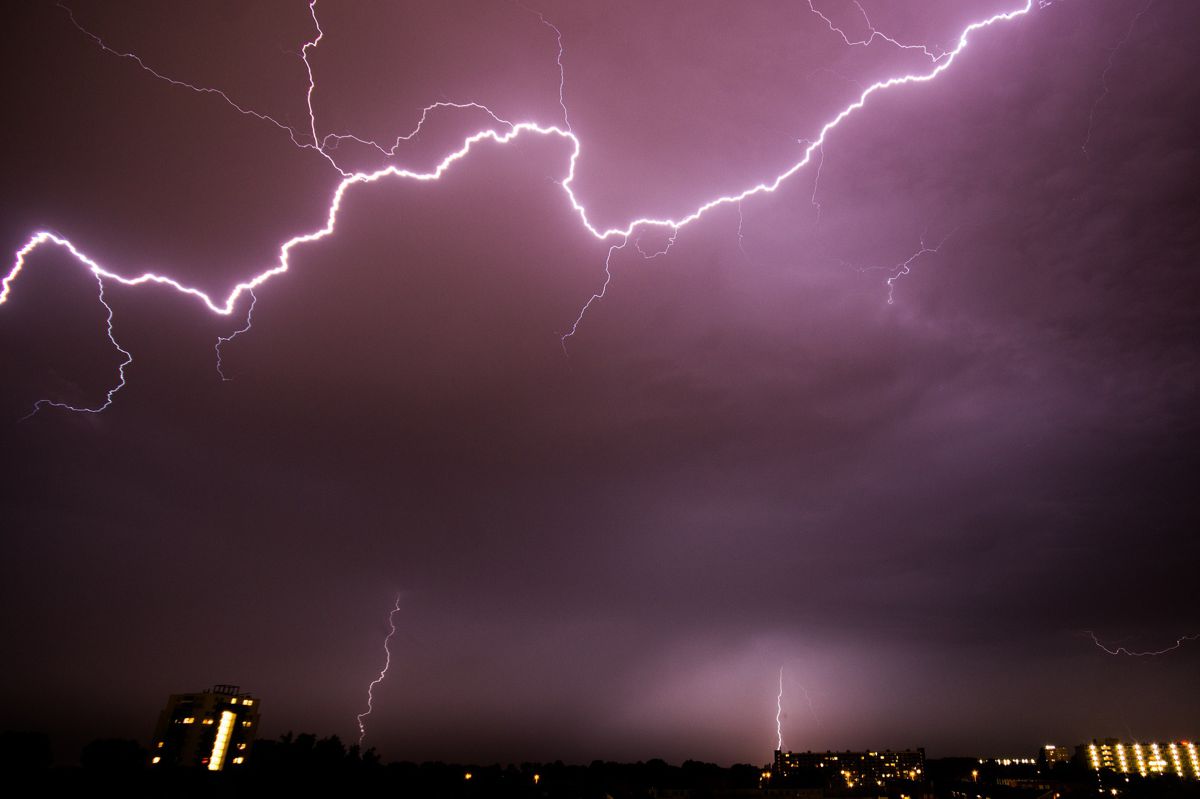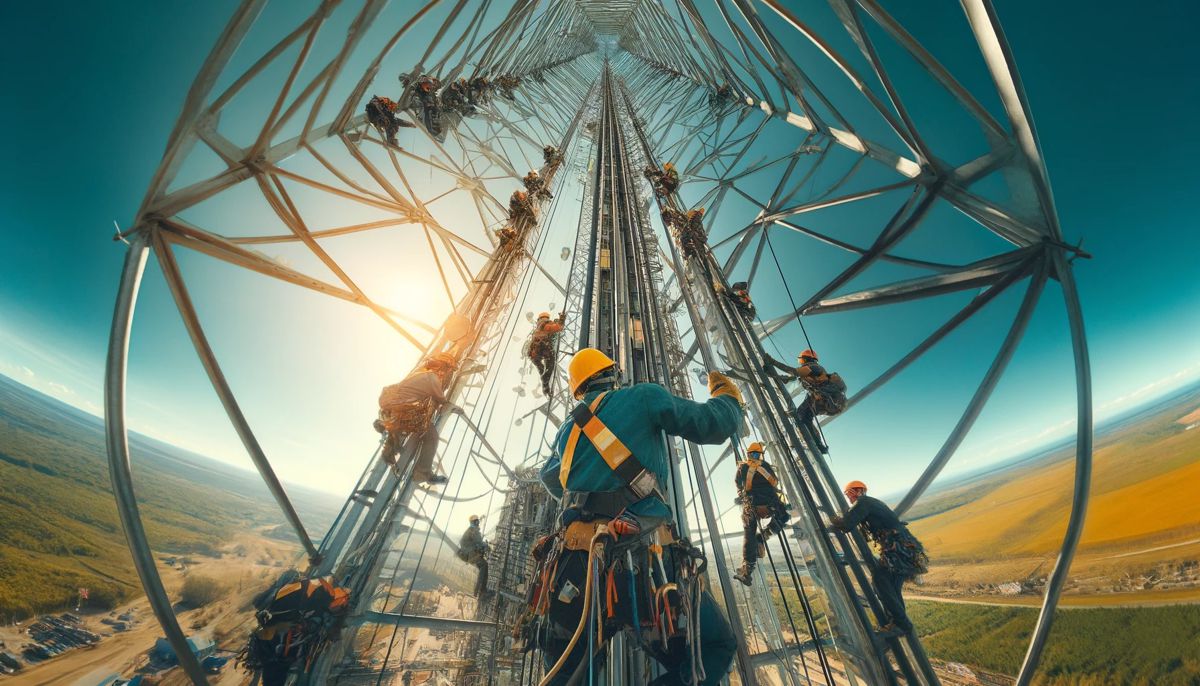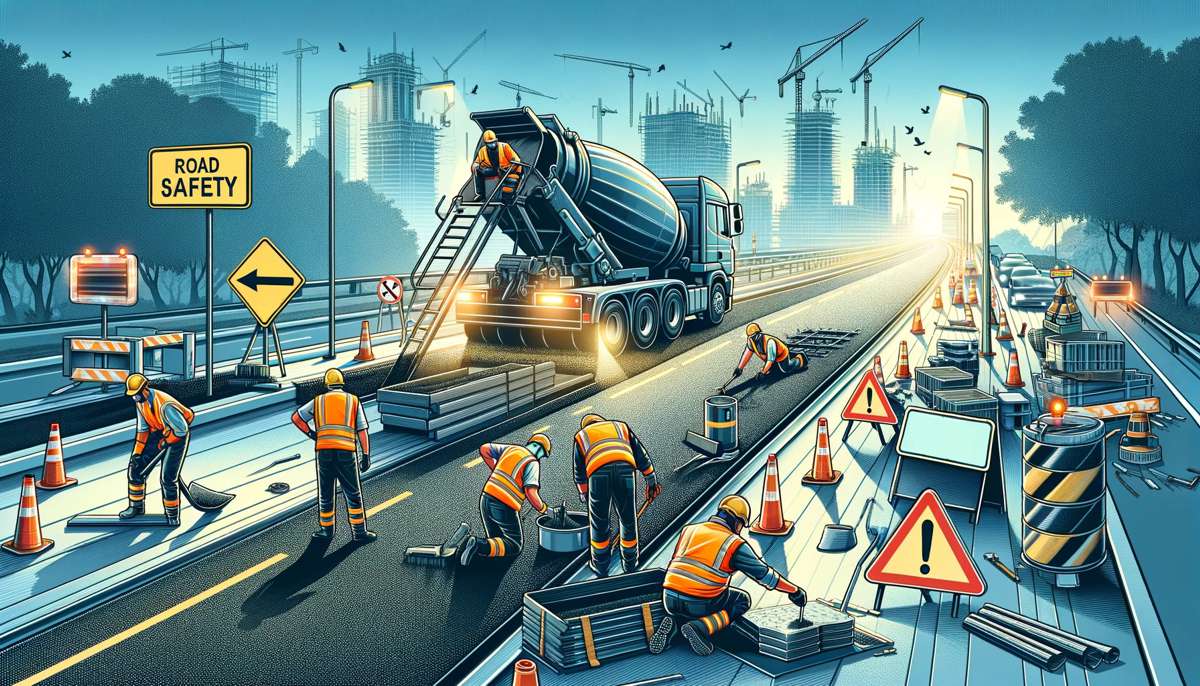How to protect from Lightning Strikes on Construction Sites
In the United States, cloud-to-ground lightning strikes occur around 20 to 25 million times a year. These strikes cause 30 deaths annually on average, as well as a number of injuries, some serious enough to cause life-long disability. Of these deaths, around 19% are typically construction workers and roofers.
While lightning strikes may seem like a less pressing safety concern than falls, electrocutions, and other construction-site threats, they have the potential to seriously injure or kill workers.
Protecting workers from lightning strikes with the right precautions is simple. With the right knowledge and available shelter, it’s possible to minimize the risk of lightning hazards with minimal changes to work-as-usual.
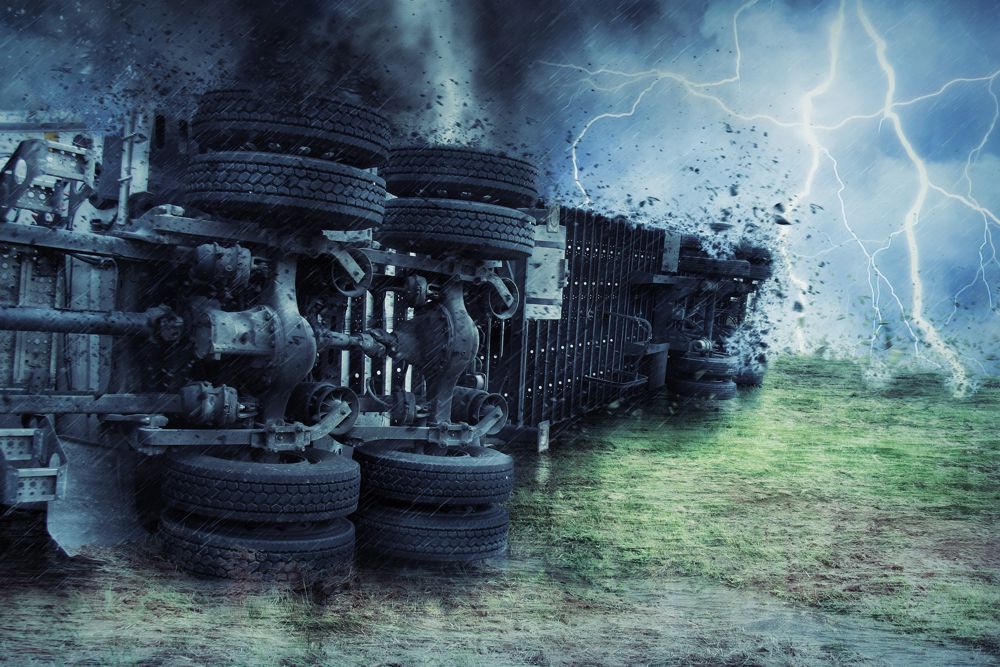
Who is at high-risk for Lightning Hazards?
In general, workers whose jobs require long periods of work outdoors in open spaces will be at the highest risk of lightning strikes. Tall objects, conductive materials like metals, and explosives can also increase the risk of lightning hazards.
According to OSHA, these are some of the occupations that expose workers to a particularly high risk of lightning hazards:
- General construction
- Roofing
- Building maintenance
- Power utility field repair
- Steel structure erection
- Plumbing and pipe fitting
- Explosives handling
Any worker on a construction or build site, as a result, is likely at a higher risk of lightning strikes than the average worker.
Additionally, some parts of the country are struck by lightning more often than others. 14 of the top 15 counties by lightning strike frequency are in Florida, for example, due to both the state’s location and unique geography.
Workers in these states may want to be especially vigilant — but all outdoor workers, no matter their location, can be at risk of being struck by lightning.
Basic Lightning Precautions for Construction
The OSHA and NOAA recommendations for lightning safety are fairly straightforward. Supervisors should check weather reports before each workday, and both supervisors and workers should keep track of weather conditions when working outdoors.
Rising wind speeds and dark clouds are the most obvious signs of a storm approaching — if these signs are noticed by workers, everyone on the job site should stay alert and be ready to respond to thunder.
When workers hear thunder, they should immediately unplug electrical equipment or tools, stow them, and move to a safe place, even if the sound of thunder is distant or intermittent. By the time thunder is audible, it’s possible to be struck by lightning — even if it isn’t raining yet or there is no visible lightning.
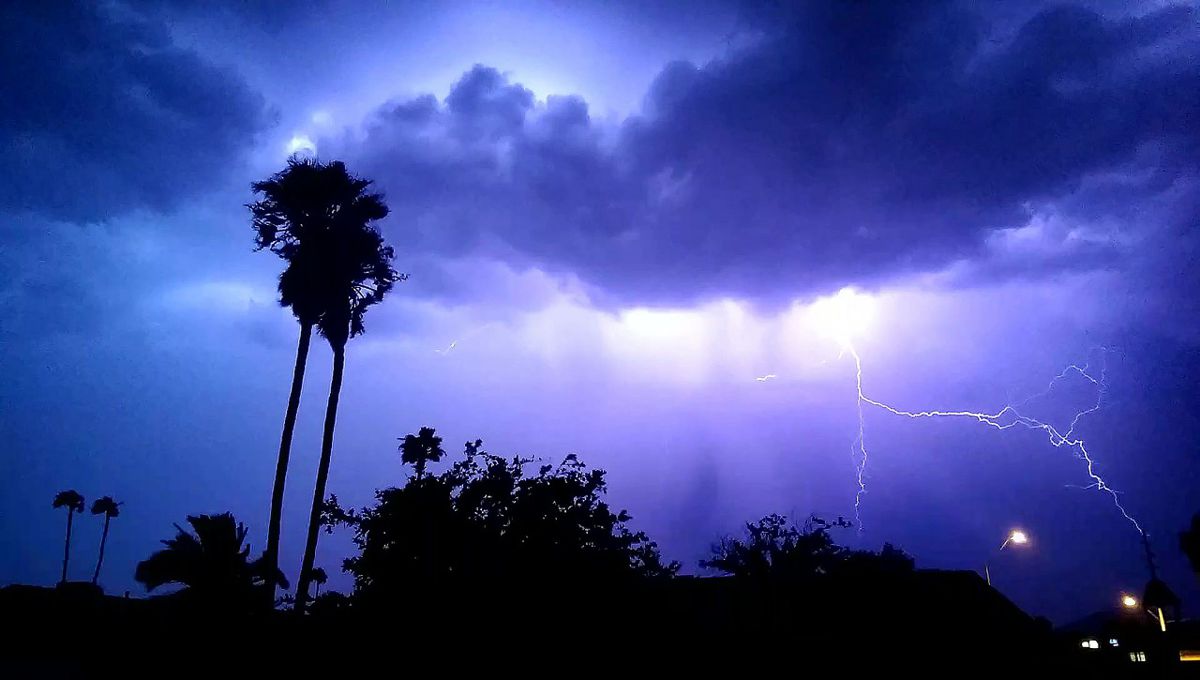
Where to Be (and Where Not to Be) in a Thunderstorm
The safest place to be in a lightning storm is a fully constructed building or fully enclosed structure with plumbing and electrical wiring. These systems will conduct electricity in the event the building is struck, and the full enclosure will minimize the risk of workers inside being struck.
Workers should remain in the shelter for 30 minutes after the last round of thunder is heard.
If a fully enclosed building isn’t available, the next best option is a metal-topped vehicle with the windows rolled up. Vehicles with open cabs — like convertibles, golf carts, tractors, and many kinds of construction equipment — won’t work as an alternative and will not provide significant protection against lightning.
If a metal-topped and closed-cab vehicle isn’t available, workers should avoid hazards that may increase the risk of being struck by lightning — like open spaces, tall objects, water, wiring, plumbing metal fencing, and other metal objects.
Low-lying areas and thickets of small trees surrounded by taller trees can provide some additional protection if shelter isn’t available. Workers should also avoid sheltering in sheds, tents, and porches.
Any shelter that isn’t fully enclosed will provide little protection against lightning strikes. Open-sided structures like porches, partially constructed buildings, and shelters won’t provide protection against lightning strikes. Some enclosed structures, like sheds and tents, can contain metal elements that can conduct electricity to workers if struck, and may also be unsuitable shelter in a storm.
Reacting When Lightning Strikes
Most lightning strikes aren’t fatal — only about 10% of people struck by lightning are killed. However, a lightning strike often results in cardiac arrest, meaning that a fast medical response is essential to minimizing the risk of death or disability.
In addition to knowing how to respond when lightning may become a threat, workers should also know what to do in the aftermath of a lightning strike.
In the event a person is struck by lightning, workers should call 911 immediately, and provide information about their location and the strike victim to the dispatcher.
The CDC recommends that rescuers move the victim to a safe place if they are in a high-risk location — like an open field or near a tall tree. Lightning strikes typically do not cause broken bones that could cause major bleeding complications if the victim is moved — moving the victim may be a safe way to minimize the risk of an additional strike.
Rescuers may want to exercise caution if the victim fell or “was thrown a long distance,” however, as blunt force can break bones and concuss the victim, creating the risk of complications if the victim is moved.
Because lightning strikes often cause cardiac arrest, rescuers should check the lightning strike victim’s pulse once they are in a safe location. If the victim is not breathing, the CDC recommends beginning mouth-to-mouth resuscitation. If the victim also does not have a pulse, rescuers should begin cardiac compressions (CPR) as well.
Lightning strikes can also cause damage to structures and start fires, which workers may need to respond to. Fire extinguishers on the job site are an essential construction site safety precaution and will help workers put out fires started by lightning.

Creating an Effective Lightning Strike Policy
Information on lightning and thunderstorm safety will only be useful for a construction team if workers know it well enough to rely on it in an emergency. A training program on lightning strikes — including how to minimize the risk of a strike and how to respond — will help ensure workers are ready for some of the risks that severe weather can deliver.
These trainings can happen on- or off-site. If you need a large space to train a large number of construction workers, fabric shelters and similar structures can make good training venues, both on lightning hazards and other safety-related topics.
It’s also important that a construction company actively builds a culture of safety among its workers. If workers and site management don’t take safety seriously, they may be willing to cut corners during daily work — by, for example, continuing to work when thunder is audible, putting themselves at risk of a lightning strike.
Lightning hazard training should be both a standard part of onboarding and a regular part of training for existing employees. The combination of onboarding and ongoing training will help to ensure employees learn about lightning safety and that the knowledge remains fresh for when they need it.
For those interested in breaking into the construction industry, a working knowledge of lightning hazards on the job site will help keep you and those who work with you safe.
In general, everyone on a construction crew who works outdoors should know what to do when they hear thunder and how to respond if someone on-site is struck by lightning.
Minimizing the Risk of Lightning Hazards on Construction Sites
Lightning strikes frequently. While it isn’t one of OSHA’s “fatal four,” lightning still poses a serious hazard for construction site workers. Without the proper precautions, a thunderstorm could pose serious risks to construction workers whose jobs require them to be outside.
Good safety practices can minimize the risk of a strike. Knowing when to seek shelter, what shelter will work and how to respond in the event of a strike are all essential skills for construction workers.
